Name INS Arihant Commissioned August 2016 Status in service Length 111 m Beam 11 m | Acquired 13 December 2014 Launched 26 July 2009 Displacement 6 million kg | |
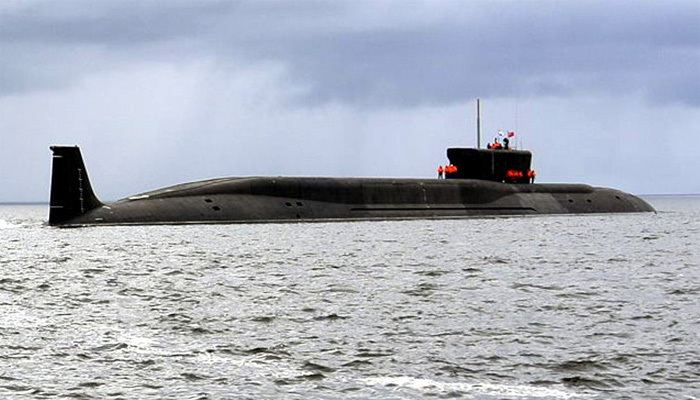 | ||
Class and type Arihant-class ballistic missile submarine | ||
Ins arihant india s first nuclear submarine top 5 facts
INS Arihant (Sanskrit: अरिहंत, meaning "Slayer of Enemies" (S-73)) is the lead ship of India's Arihant class of nuclear-powered ballistic missile submarines. The 6,000 tonne vessel was built under the Advanced Technology Vessel (ATV) project at the Ship Building Centre in the port city of Visakhapatnam.
Contents
- Ins arihant india s first nuclear submarine top 5 facts
- Ins arihant pakistan china
- Design
- Armament
- Launch
- Development phases
- Sea and weapons trials
- Commissioning
- Operator
- References

Arihant was launched on 26 July 2009, the anniversary of Vijay Diwas (Kargil War Victory Day) by then Prime Minister of India, Dr Manmohan Singh. After fitting out and extensive sea trials, on 23 February 2016, she was confirmed as ready for operations, and was commissioned in August 2016.
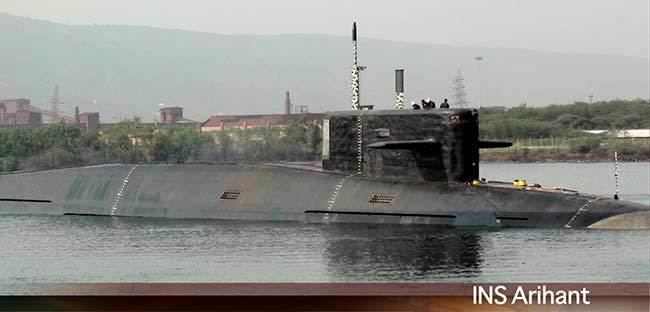
Ins arihant pakistan china
Design
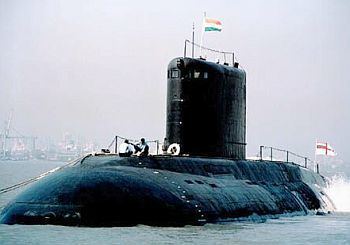
INS Arihant is to be the first of the expected five in the class of submarines designed and constructed as a part of the Indian Navy's secretive Advanced Technology Vessel (ATV) project. The Arihant-class submarines are reported to be based on the Akula-class submarine. Their crew will have the opportunity to train on INS Chakra, an Akula-class submarine, which the Indian Navy leased from Russia. Arihant will be more of "a technology demonstrator", rather than a fully operational SSBN according to Admiral Nirmal Verma.
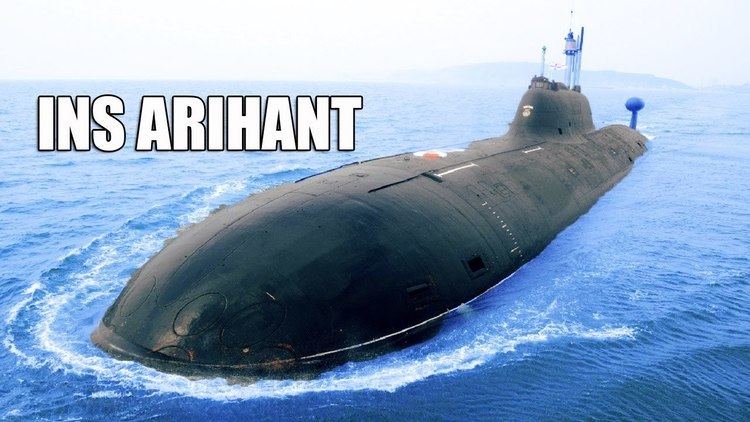
The vessel will be powered by an 83 megawatts (111,305 hp) pressurised light-water reactor with enriched uranium fuel. A land-based prototype of the reactor was first built at Kalpakkam and made operational in September 2006. Successful operation over a period of three years yielded the data that enabled the production version for Arihant. It was reported that an 80 MW nuclear reactor was integrated into the hull of the ATV in January 2008.

The hull for the vessel was built by L&T's Hazira shipbuilding facility. Tata Power SED(Strategic Engineering division) built the control systems for the submarine. The systems for the steam turbine integrated with the reactor are supplied by Walchandnagar Industries. The consultancy for this project was provided by Russia. Russia was also reported to have provided assistance to Bhabha Atomic Research Centre (BARC) scientists in miniaturising the reactor to fit into the hull of the nuclear submarine
Armament
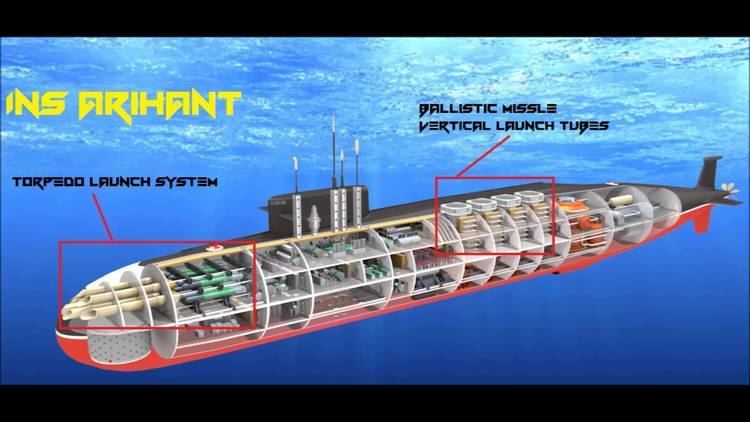
Arihant has four vertical launch tubes, which can carry 12 (three per launch tube) smaller K-15 missiles or four larger K-4 missiles. The K-4 has a longer range of 3,500 km (2,200 mi) and has commenced trials.
Launch
INS Arihant was introduced to the public on 26 July 2009 at a symbolic launch ceremony Prime Minister Manmohan Singh's wife Gursharan Kaur. The launch coincided with the 10th anniversary of the conclusion of the Kargil War. and consisted of floating the vessel by flooding the dry dock. Defence Professionals Daily claimed Arihant was launched without key systems including its nuclear reactor, surveillance equipment, and ordnance. Per naval tradition, Gursharan Kaur cracked a coconut on the hull to mark the launch of the submarine at the secret naval base 'Matsya' in Visakhapatnam. Photography was prohibited and photos showing the complete vessel are not available. In his address to the crowd, Prime Minister Singh billed the submarine as an outcome of a public-private partnership. He also thanked Russia in his address, stating, "I would also like to express our appreciation to our Russian friends for their consistent and invaluable cooperation, which symbolises the close strategic partnership that we enjoy with Russia". The launch of Arihant strengthens India's endeavour to build a credible nuclear triad – the capability to fire nuclear weapons from air, land and sea.
Development phases
On the condition of anonymity, a nuclear scientist familiar with the project echoed this report in response to the media coverage that India had successfully launched a completed nuclear submarine. It was also expected that the duplication of India's land based reactor, integration of systems, and sea trials are expected to take three to five years.
Admiral Verma told reporters on 7 August 2012 that sea trials of Arihant are commencing in coming months and she is steadily progressing towards operationalisation. On 27 January 2013, Sagarika, the primary armament of Arihant, completed its final developmental test and was later integrated with the submarine. On 10 August 2013, the nuclear reactor of the submarine went critical; this was done after several months of system checks using shore-based high-pressure steam. The reactor's power was raised in increments of 5 to 10% until it reached full power.
Sea and weapons trials
On 13 December 2014, Arihant emerged partially submerged from the breakwaters of the Visakhapatnam harbour, marking a step in validation of indigenous technologies and sailed north along the Bay of Bengal coast off for its extensive sea trials. The sea trials will include the firing of the indigenous submarine-launched ballistic missiles & cruise missiles. While its 100-member crew have been trained by Russian specialists, Indian scientists at Mumbai's BARC have developed a significant expertise in reducing the size of the reactor to help it fit into the 10 metres (33 ft) diameter hull of the submarine. As per Indian Defence Minister, the sea trials of INS Arihant will last for 8 to 10 months, before its induction and commissioning into the Indian Navy in the first quarter of 2016.
On 25 November 2015, a dummy or unarmed Sagarika missile was successfully test fired from Arihant. The submarine then underwent further extensive sea trials, which were completed by early February 2016. Though it had initially been expected Arihant would be commissioned in time to participate in the International Fleet Review 2016, her participation was subsequently ruled out due to security concerns. On 23 February, Arihant was officially confirmed as ready for operations.
Commissioning
In August 2016, Prime Minister Narendra Modi commissioned INS Arihant into the Indian Navy.
